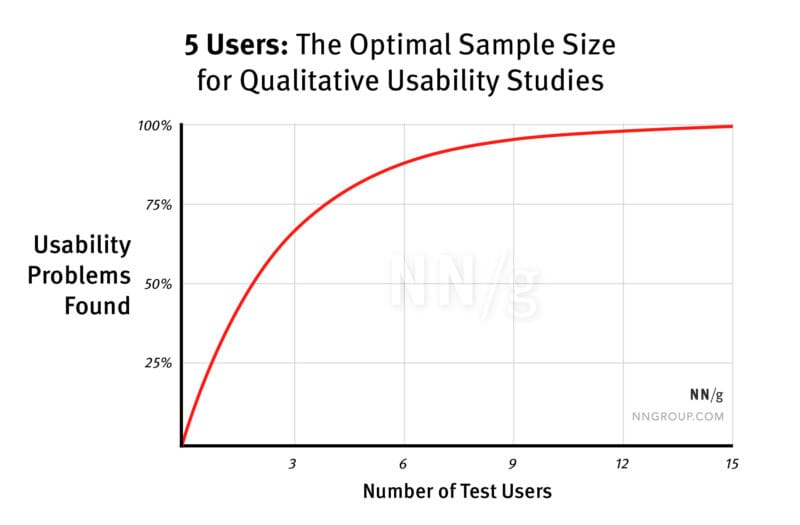Understanding the Right Number of Users for Effective UX Research
In the quest to optimize digital products and conduct qualitative market research to understand user needs, a common question arises: How many users are ideal for a successful usability test or user research? The common assumption is that more users yield better results, but that’s not necessarily the case.
Qualitative vs. Quantitative Research: The Key Difference
Before diving into the reasoning behind the “5 users” rule, it is essential to distinguish between qualitative and quantitative research.
Quantitative research aims to collect data from a large sample to measure trends and behaviors statistically. This is useful for validating hypotheses and making data-driven decisions at scale.
Qualitative research, on the other hand, focuses on in-depth insights from a small group of users. The goal is to uncover usability issues, user pain points, and behavioral patterns that can directly impact product experience.
When conducting usability testing, we rely on qualitative research, which means the number of users tested is less important than the depth of insights obtained.
The Science Behind Testing with 5 Users
Decades of UX research and experience, including the pioneering work of Jakob Nielsen, have demonstrated that testing with just 5 users can uncover approximately 85% of usability issues. This principle, detailed in Nielsen’s article Why You Only Need to Test with 5 Users, is rooted in the concept of diminishing returns.
The Law of Diminishing Returns in Usability Testing
The law of diminishing returns, a key concept in economics and production theory, explains why additional test users provide progressively fewer new insights. Here’s how it applies to usability research:
The first few users identify the most critical and common usability problems.
Additional users begin to uncover fewer new issues, leading to repeated findings.
Beyond 5 users, the cost and time required increase significantly while the number of new insights declines.
While testing with 15 users is often considered the upper limit for usability testing, the first 5 participants already provide the most impactful findings. If your product targets significantly different user personas, additional testing groups may be necessary to ensure adequate coverage.
Why Quality Outweighs Quantity in Usability Testing
Here are key reasons why focusing on 5 users makes usability testing more effective:
1. Efficiency
Testing with 5 users is much more time- and cost-efficient, enabling businesses to gather insights faster without exhausting resources. This agility is crucial in fast-paced, competitive markets.
2. Identifying Critical Issues
A smaller, well-chosen group of users can reveal the most significant usability problems, which often affect a large percentage of the user base. Addressing these critical pain points improves overall satisfaction and retention.
3. Simplified Decision-Making
With fewer participants, research findings are easier to digest and communicate to stakeholders, facilitating faster and more effective decision-making among development and design teams.
4. Continuous Iteration
Smaller-scale testing allows for more frequent iterations, meaning usability problems can be addressed continuously rather than waiting for large-scale, exhaustive testing. This leads to more agile product development cycles and better long-term user experience improvements.
Final Thoughts: Less Is More in UX Research
In a world where users can switch to a competitor with a single click and expectations are constantly rising, adopting a smart, resource-efficient usability testing strategy is essential. Testing with just 5 users is a proven, research-backed method that balances cost-effectiveness with maximum usability insights.
By prioritizing quality over quantity, we’ve helped thousands of companies achieve exceptional UX improvements. The “5 users” rule is not just a best practice—it’s a strategic approach that allows businesses to optimize their digital experiences with minimal investment and maximum impact. In UX research, sometimes, less truly is more.
This article has been created with the help of AI, based on original ideas from our team.





